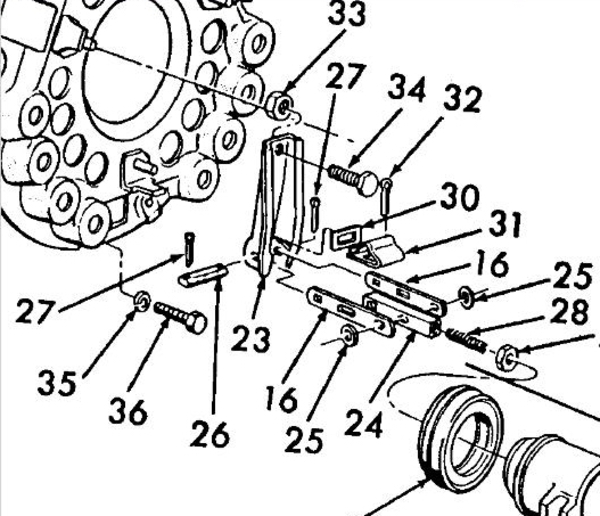Derek Nichols
New User
The clutch would not disengage on my 1966 Ford
3000 Tractor so I purchased a new dual clutch kit
1112-6061 on YT. I replaced the rear main seal,
pilot bearing, and throw-out bearing. After
installation, the clutch will not
release/disengage. The throw-out bearing seems to
travel the proper distance with little resistance
but abruptly stops when it seems to contact the
pressure plate fingers. I have adjusted the finger
bolts all the way out. I also tried the clutch
disc with the flange facing the flywheel and then
reversed it so it faces the pressure plate but had
the same result. The alignment tool will not sink
all the way in with the clutch flange facing the
pressure plate so I believe it should face the
flywheel.
When I tighten the 6 pressure plate bolts onto the
flywheel, the pressure plate fingers seem to
collapse all the way down so that they are almost
recessed. It seems to me that the fingers should
stick out. I read a few other posts where other
people had this issue but did not see a
resolution. Could I have the wrong clutch disc? Is
it possible that the pressure plate needs shims?
Any expert advice would be much appreciated.
3000 Tractor so I purchased a new dual clutch kit
1112-6061 on YT. I replaced the rear main seal,
pilot bearing, and throw-out bearing. After
installation, the clutch will not
release/disengage. The throw-out bearing seems to
travel the proper distance with little resistance
but abruptly stops when it seems to contact the
pressure plate fingers. I have adjusted the finger
bolts all the way out. I also tried the clutch
disc with the flange facing the flywheel and then
reversed it so it faces the pressure plate but had
the same result. The alignment tool will not sink
all the way in with the clutch flange facing the
pressure plate so I believe it should face the
flywheel.
When I tighten the 6 pressure plate bolts onto the
flywheel, the pressure plate fingers seem to
collapse all the way down so that they are almost
recessed. It seems to me that the fingers should
stick out. I read a few other posts where other
people had this issue but did not see a
resolution. Could I have the wrong clutch disc? Is
it possible that the pressure plate needs shims?
Any expert advice would be much appreciated.









































